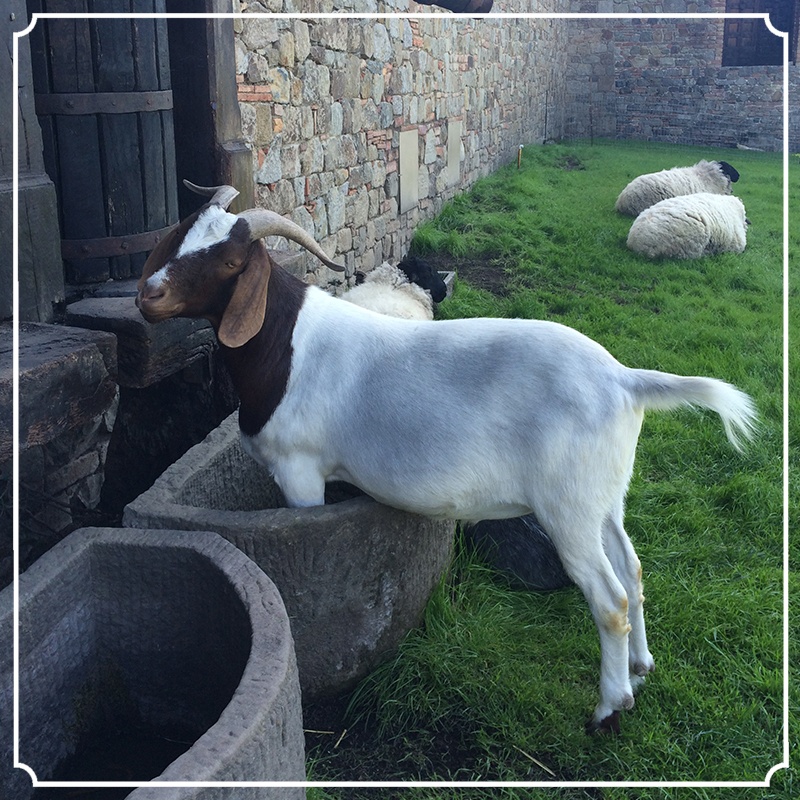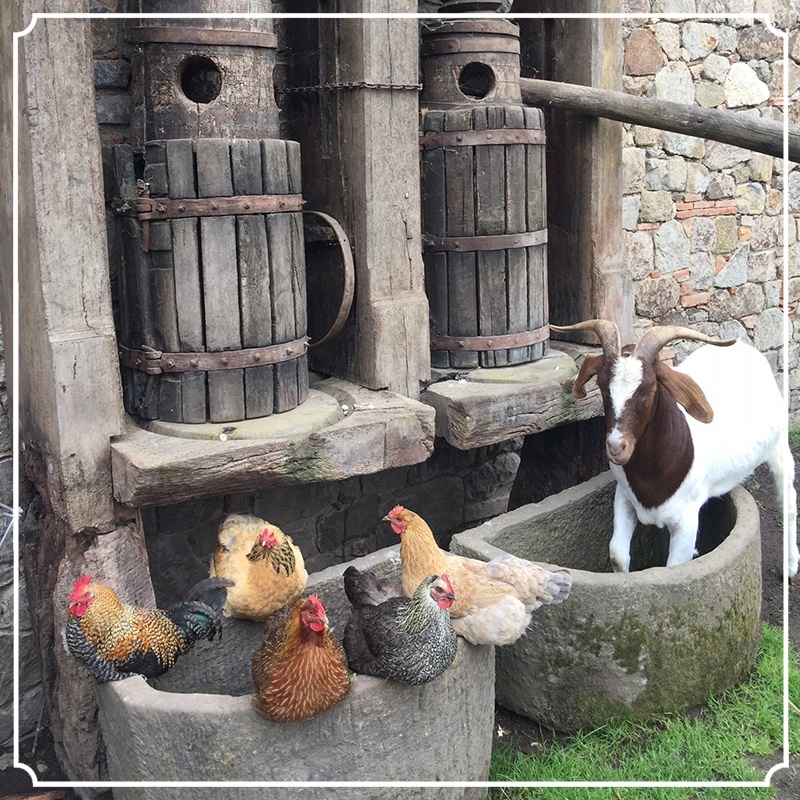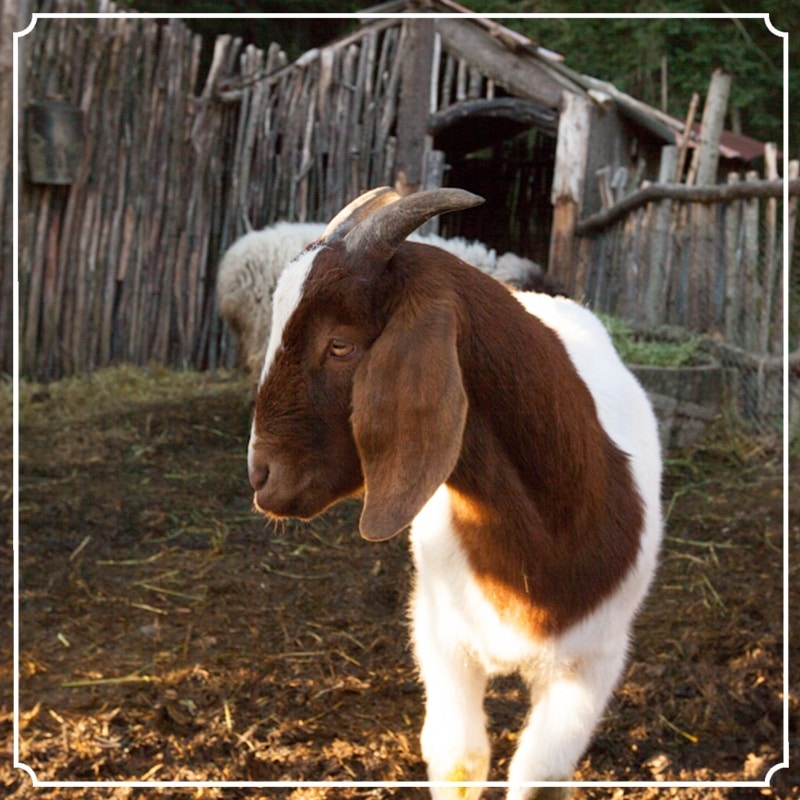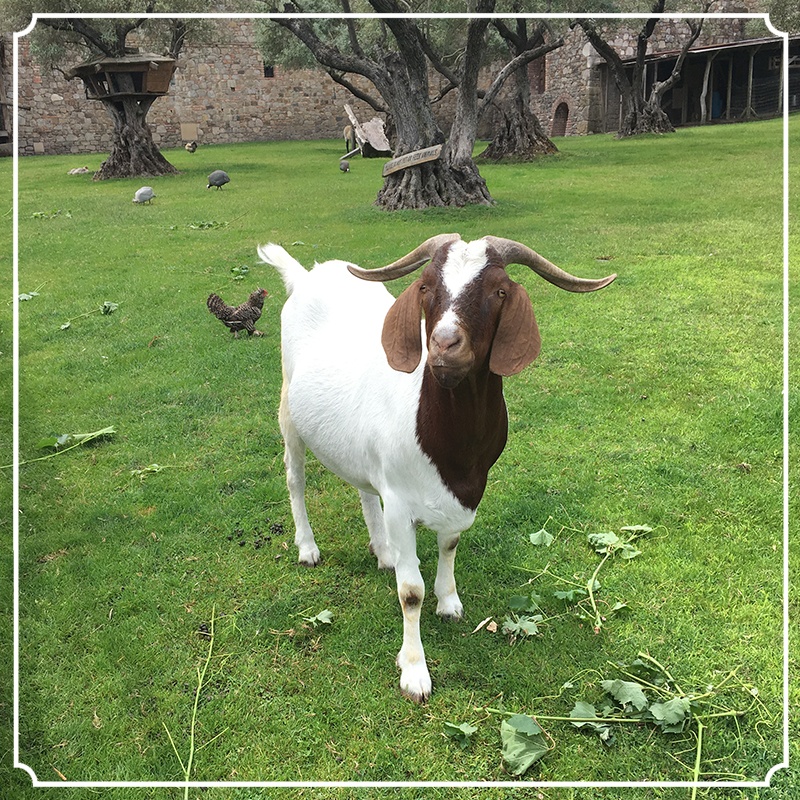
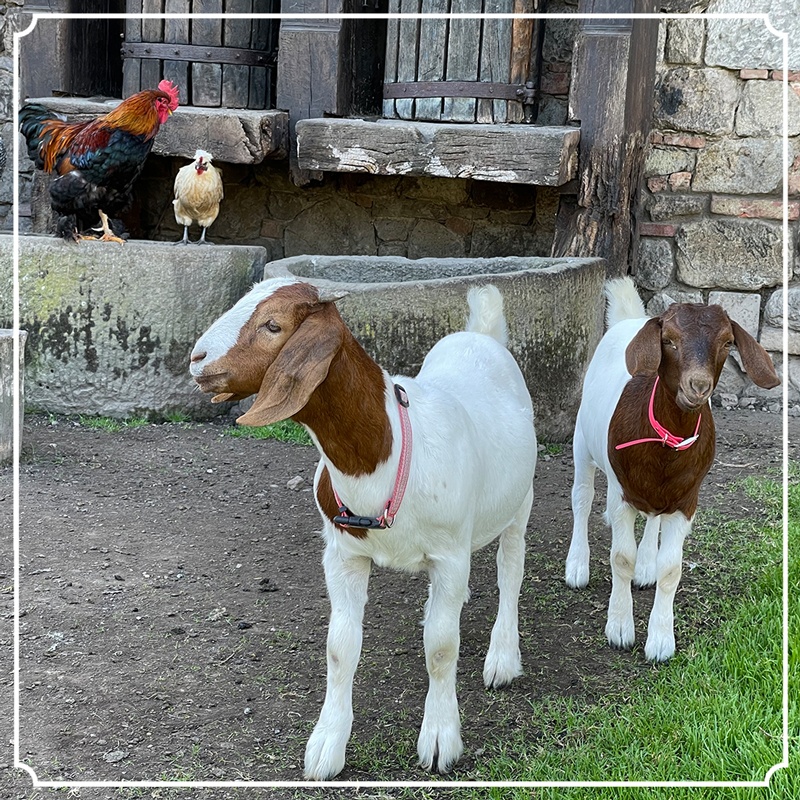
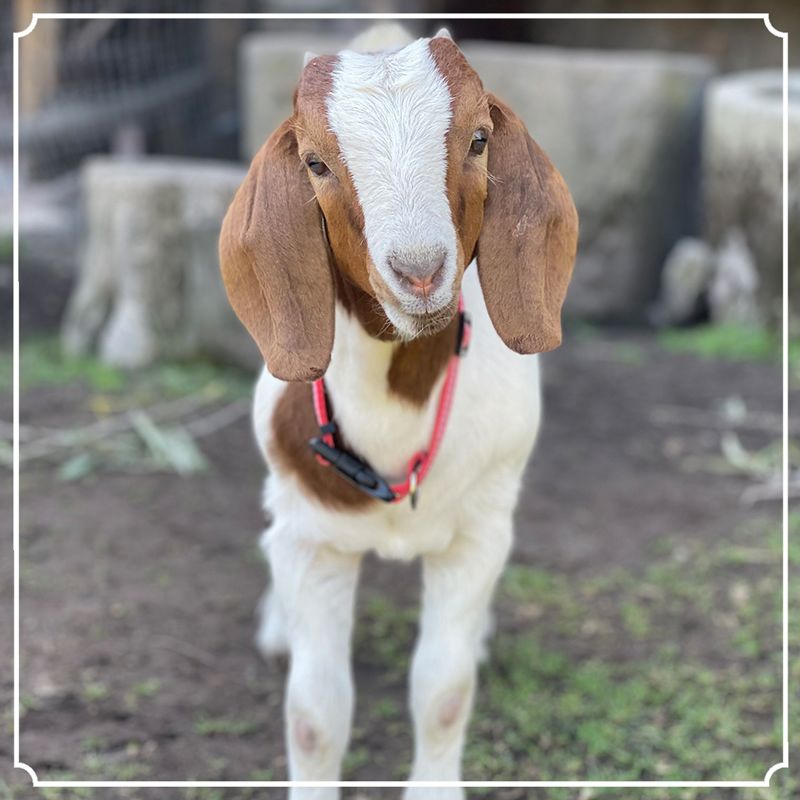
GIACOMO II & BELLA
Giacomo II & Bella – New Baby Goats!
Meet Giacomo II & Bella! After a few tough weeks with the herd these two are fully integrated in Castle culture. Show them love.
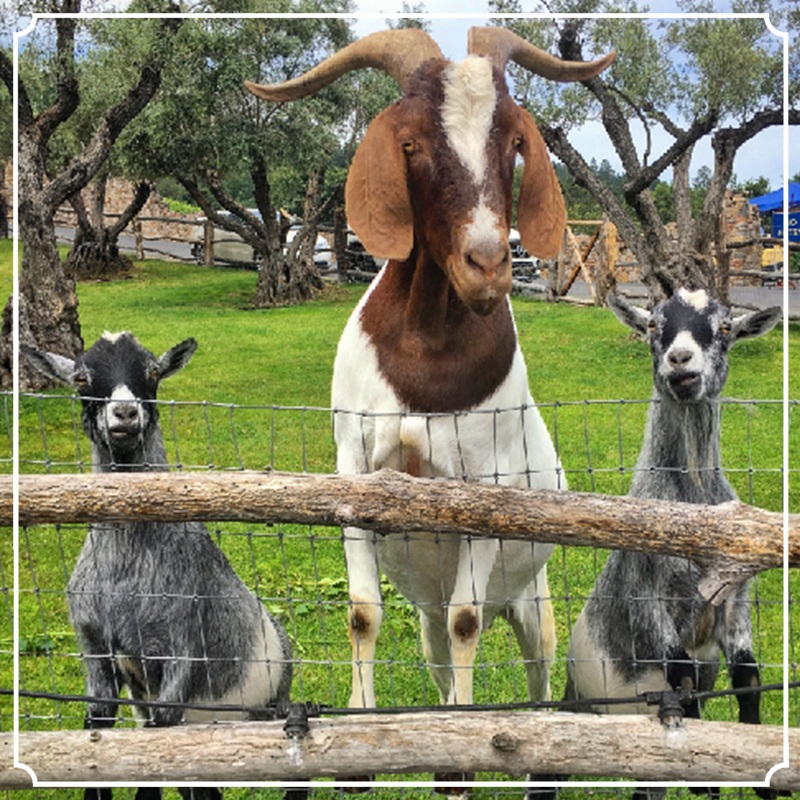
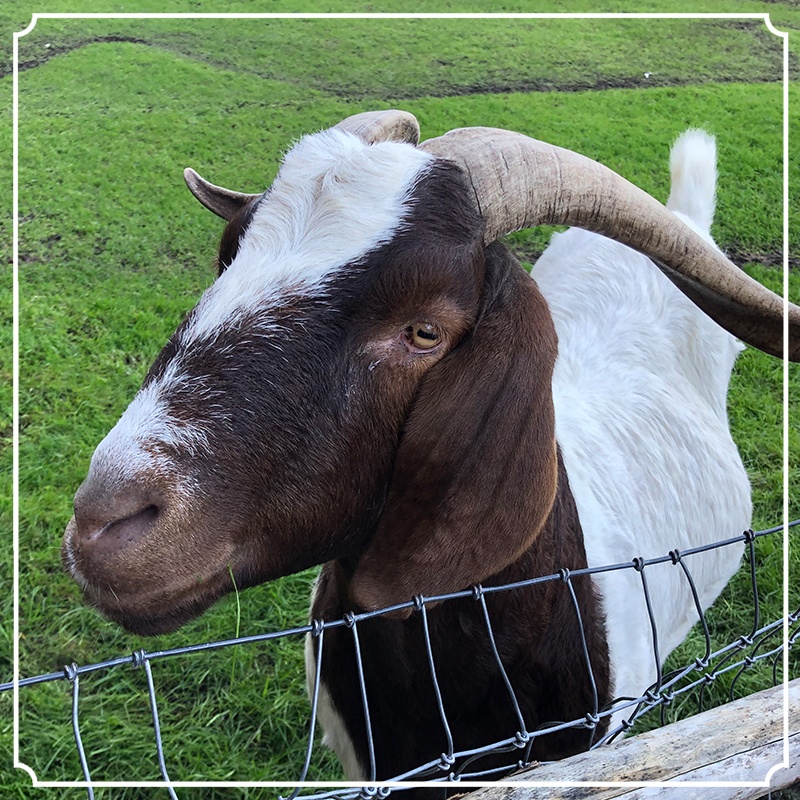
GIACOMO
Giacomo – The Most Photographed Goat in the World
Meet Giacomo! Legend has it, he is the most photographed goat in the world. He has been warming hearts with his cute smile and chomping olive branches since he arrived in 2010. He was “appointed” to eat the grass between the vines, but we found the shrubs, vines and olive trees were his favorite target. He was subsequently moved to the farm where he now has lots of pals including his beloved younger twin brothers (Vincenzo & Paolo), the emu couple, the lovely lady hens and Romeo the Peacock who tries to steal the show. But Giacomo wins while stealing visitors hearts every day.
How can you resist that billy goat smile & floppy ears… and he just loves to be photographed. Take a snapshot of Giacomo and post it on your Instagram page with the hashtag: #CastellodiAmorosaGOAT while you are there check out his other famous photoshoots!
Interesting Goat Facts
- We asked Giacomo to clean up the grass- he ate the olive branches- we thought we bought a lawn mower.
- Goats have this weird inclination to stand on Cows – Lucky we don’t have any cows.
- It’s a popular belief that goats eat tin cans. That’s not true. They are browsers and eat everything but the can.
- Goats do not prefer to stay alone. They like company. They are frequently companions to race horses, due to their calming effect.
- There are more than 300 goat breeds around the world.
- Goats were the first animals to be used for milk by humans.
- Goats lack upper front teeth. Instead of teeth they have a very hard gum pad. Please don’t test this!
- Goats can be taught their name and to come when called.
- Goats, being mountain animals, are very good at climbing; they’ve been known to climb to the tops of trees, or even dams!
- Goats have four “stomachs.” Their food moves first into the rumen (from which it is periodically regurgitated for more “cud chewing”), then to the reticulum, later to the omasum, and finally to the abomasum (which is most like a more sensitive human stomach).
- Goats’ pupils (like many hooved animals) are rectangular. This gives them vision for 320 to 340 degrees (compared to humans with 160-210) around them without having to move and they are thought to have excellent night vision.




